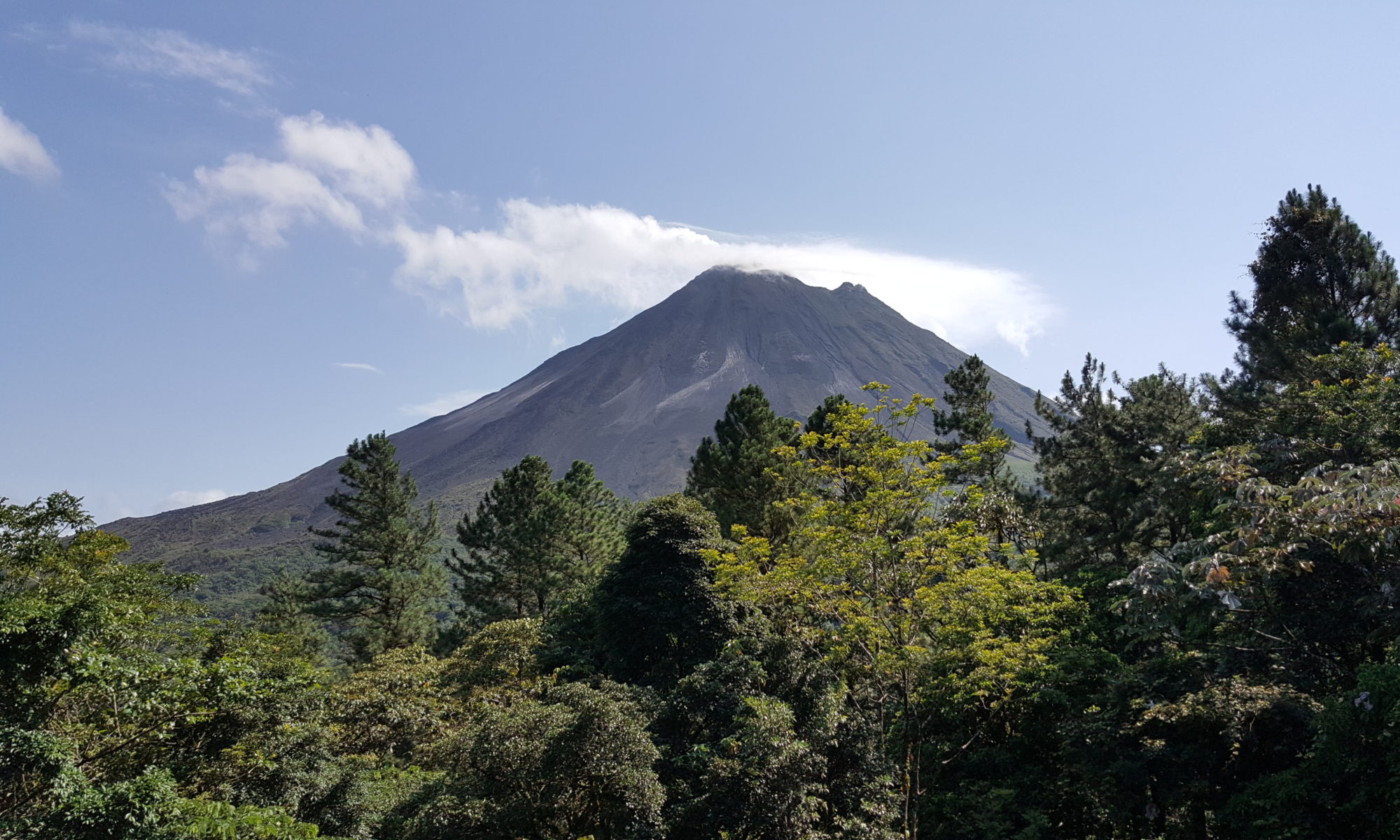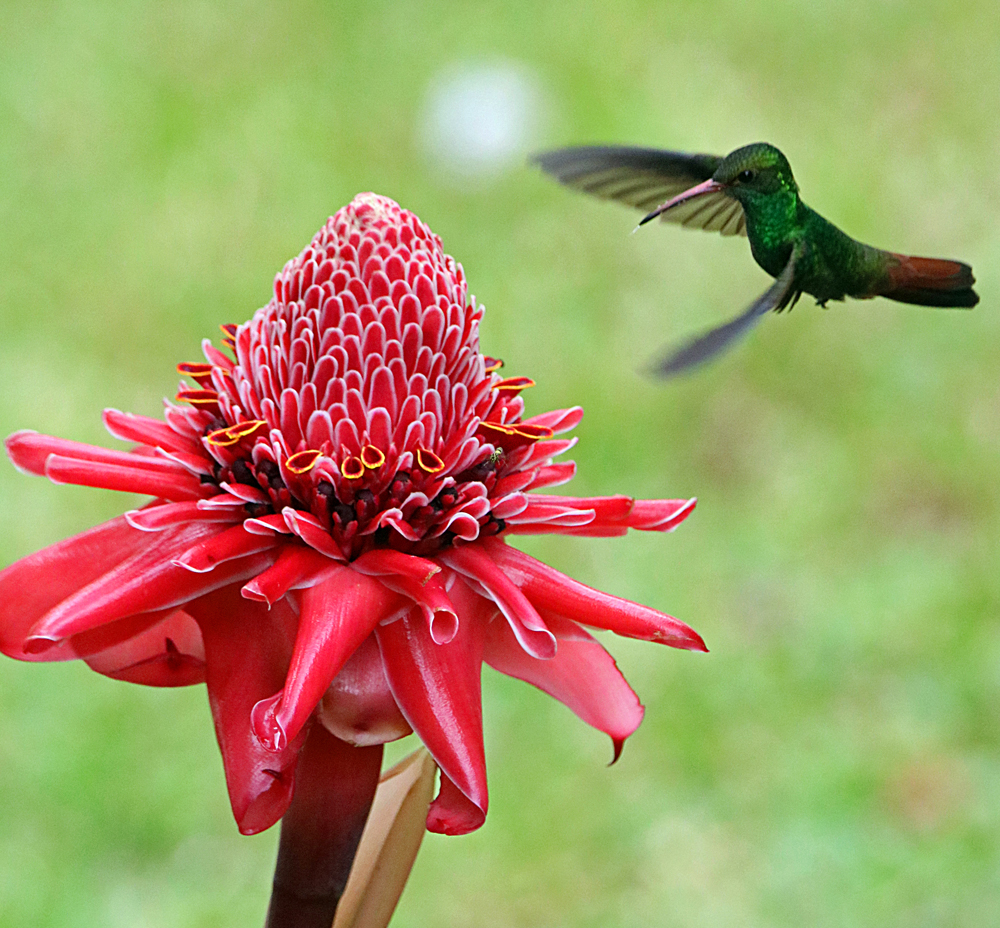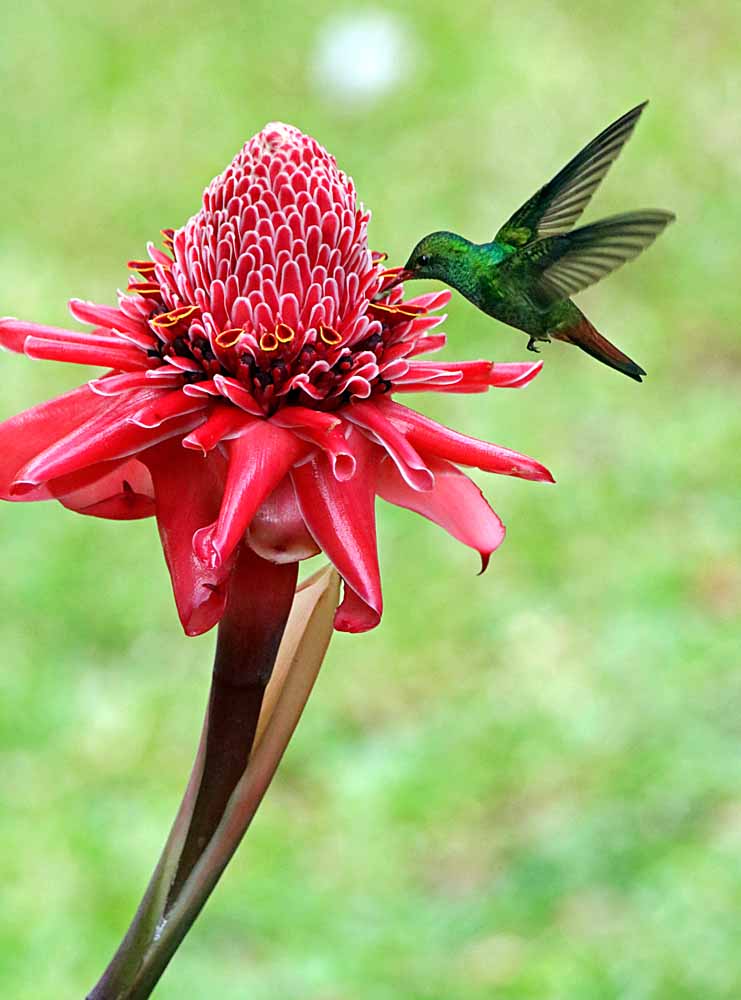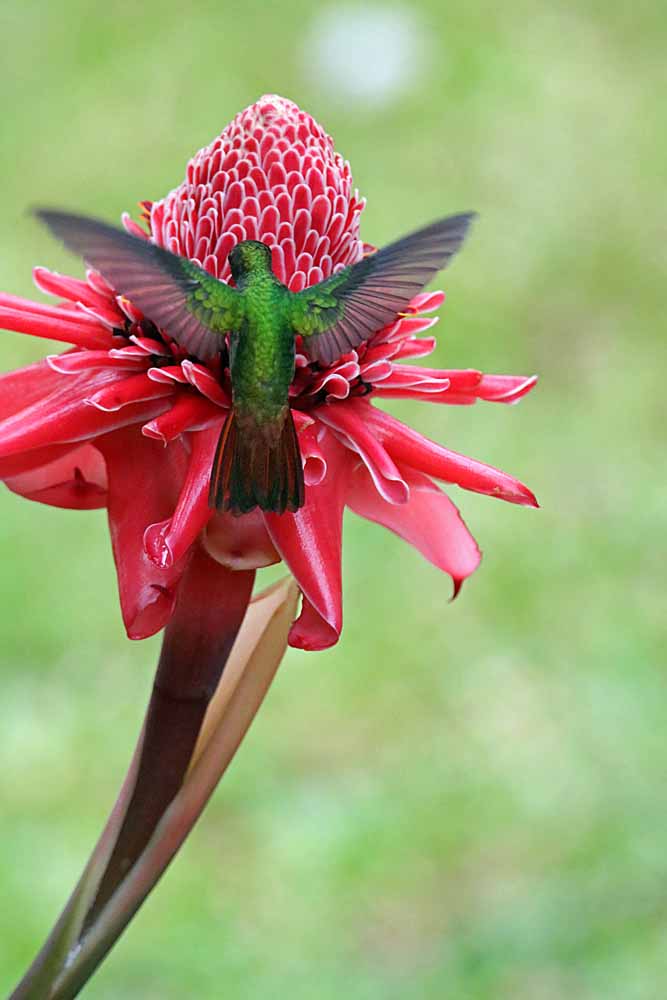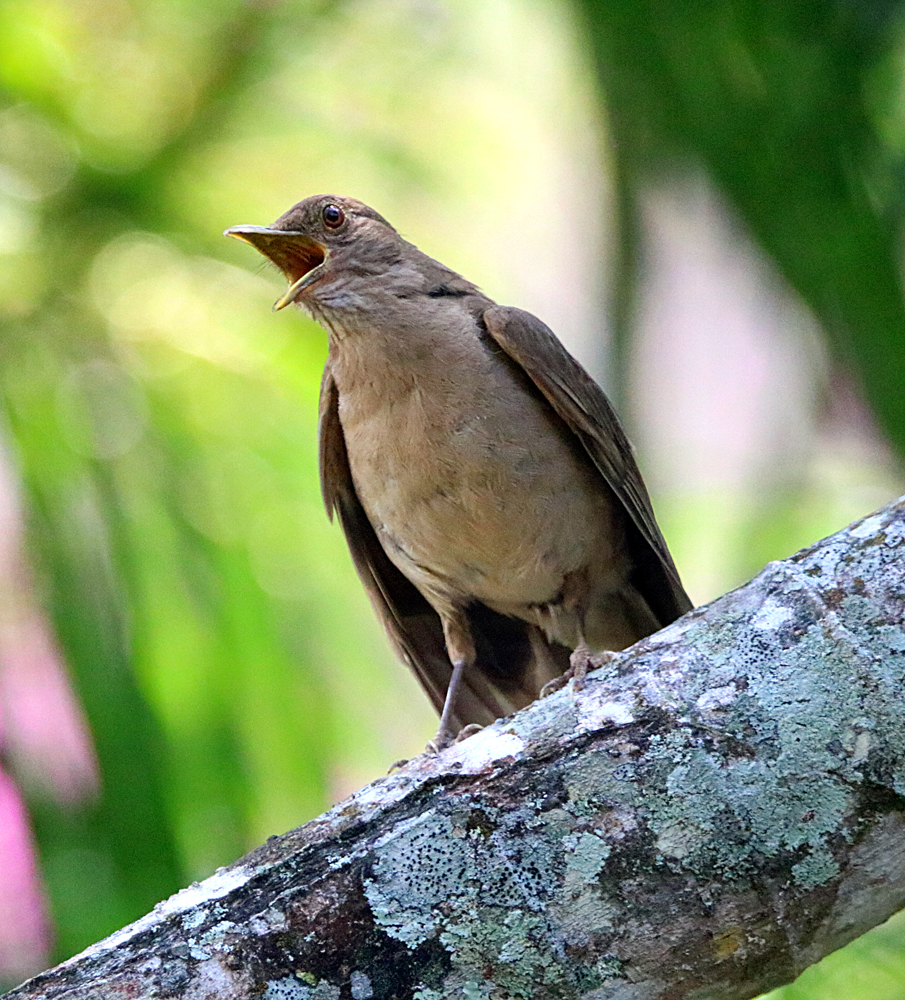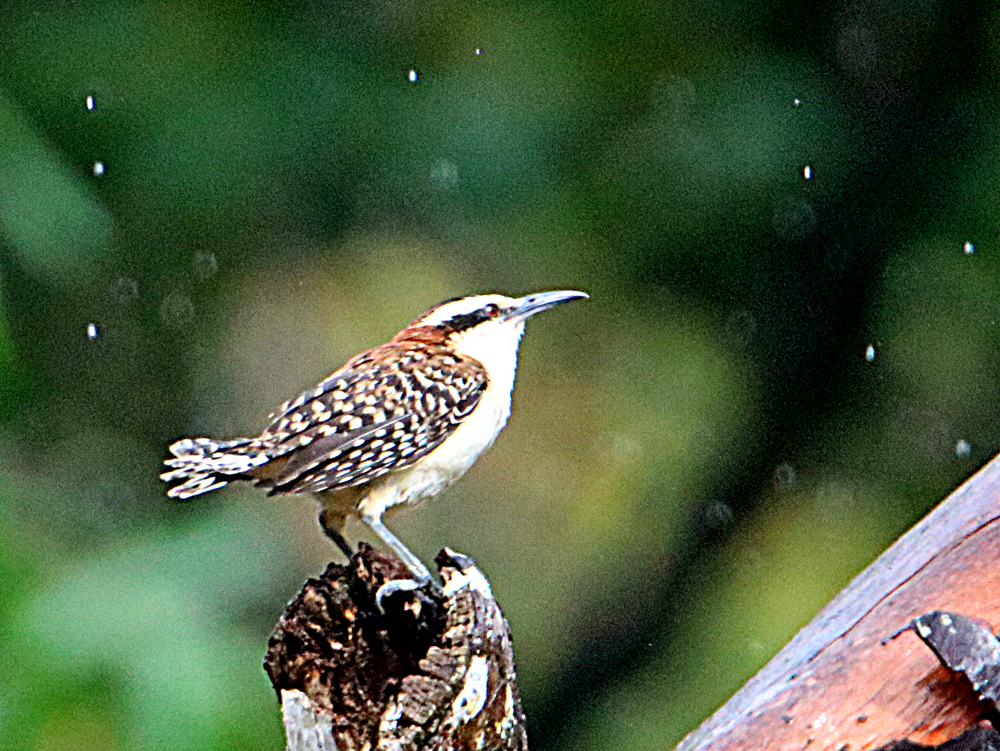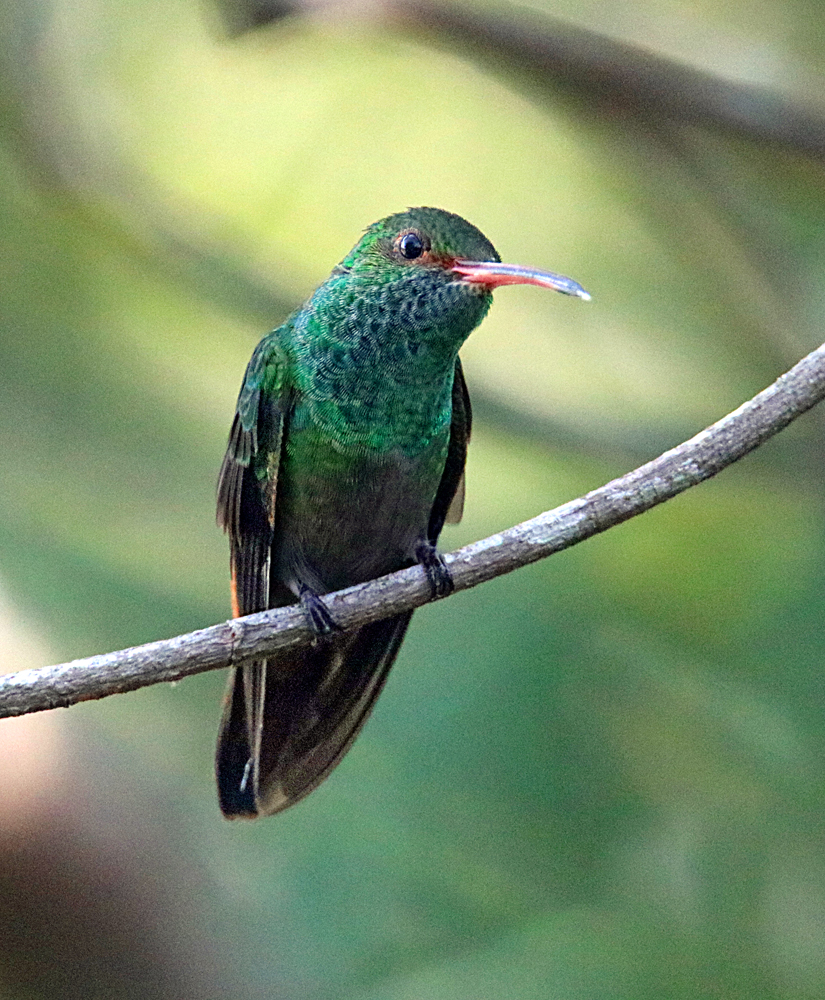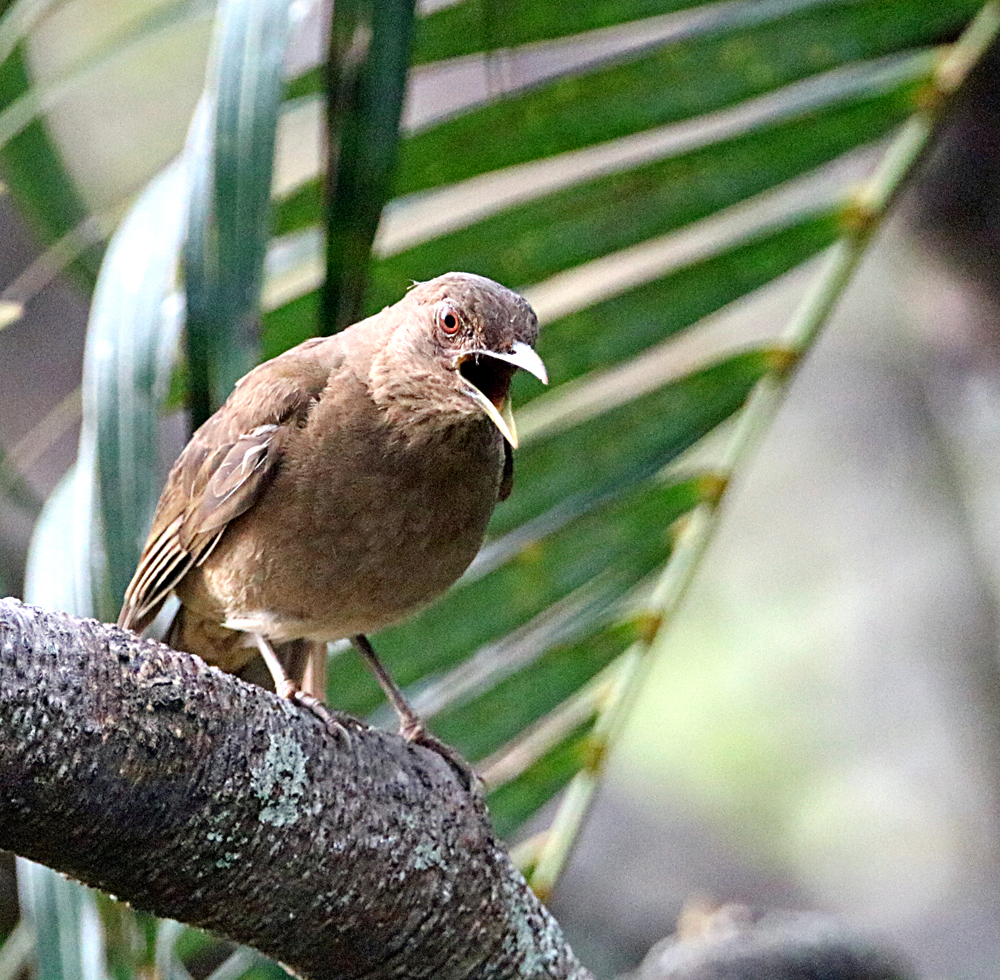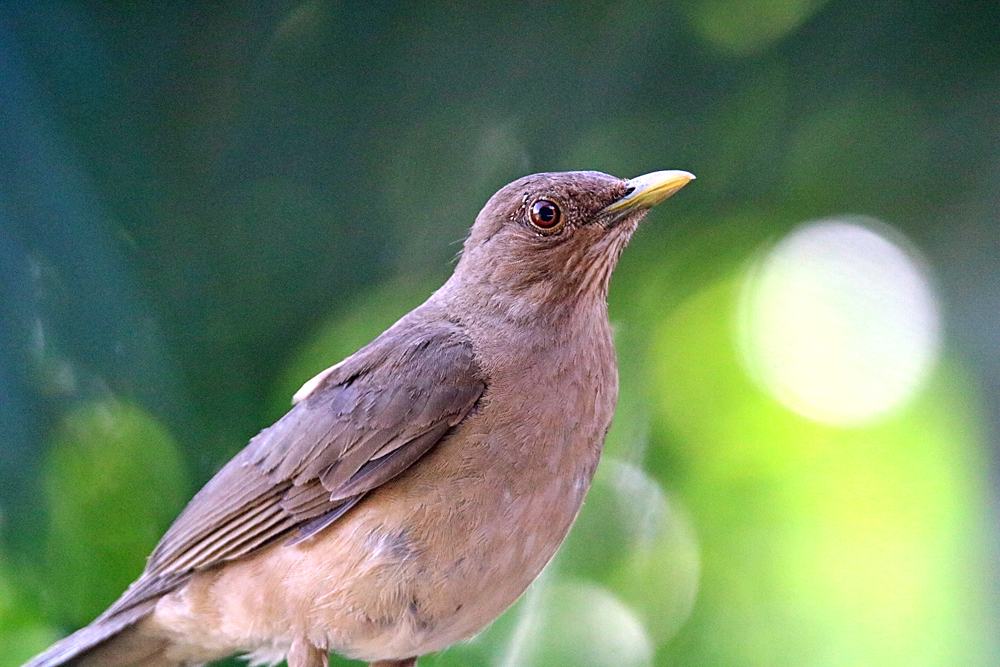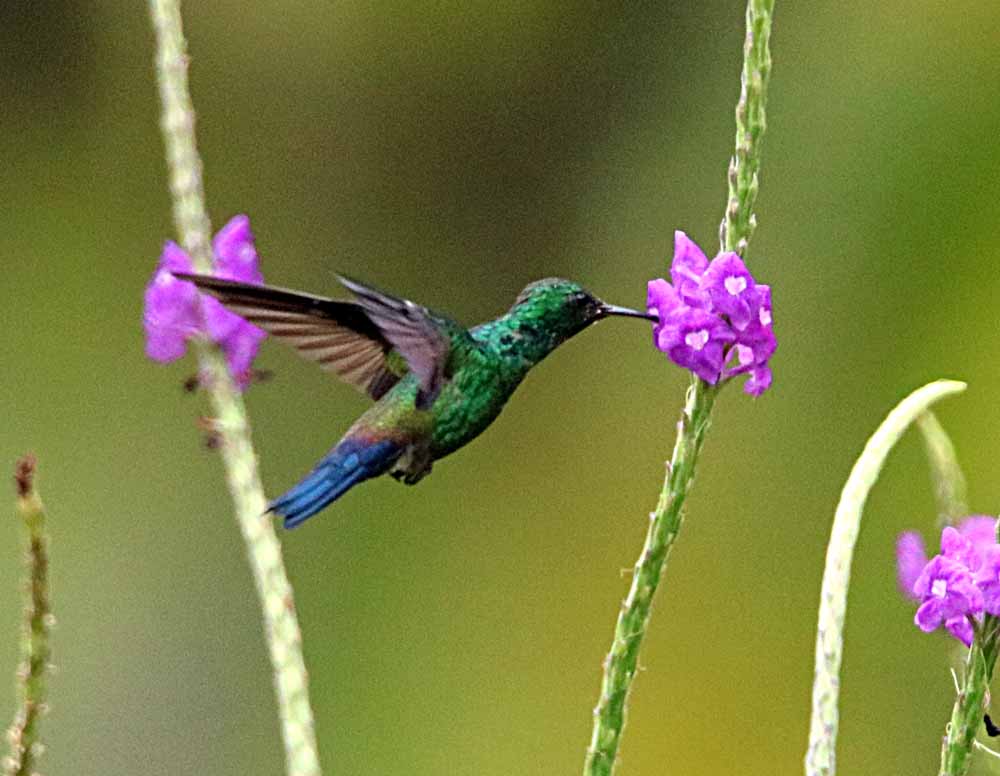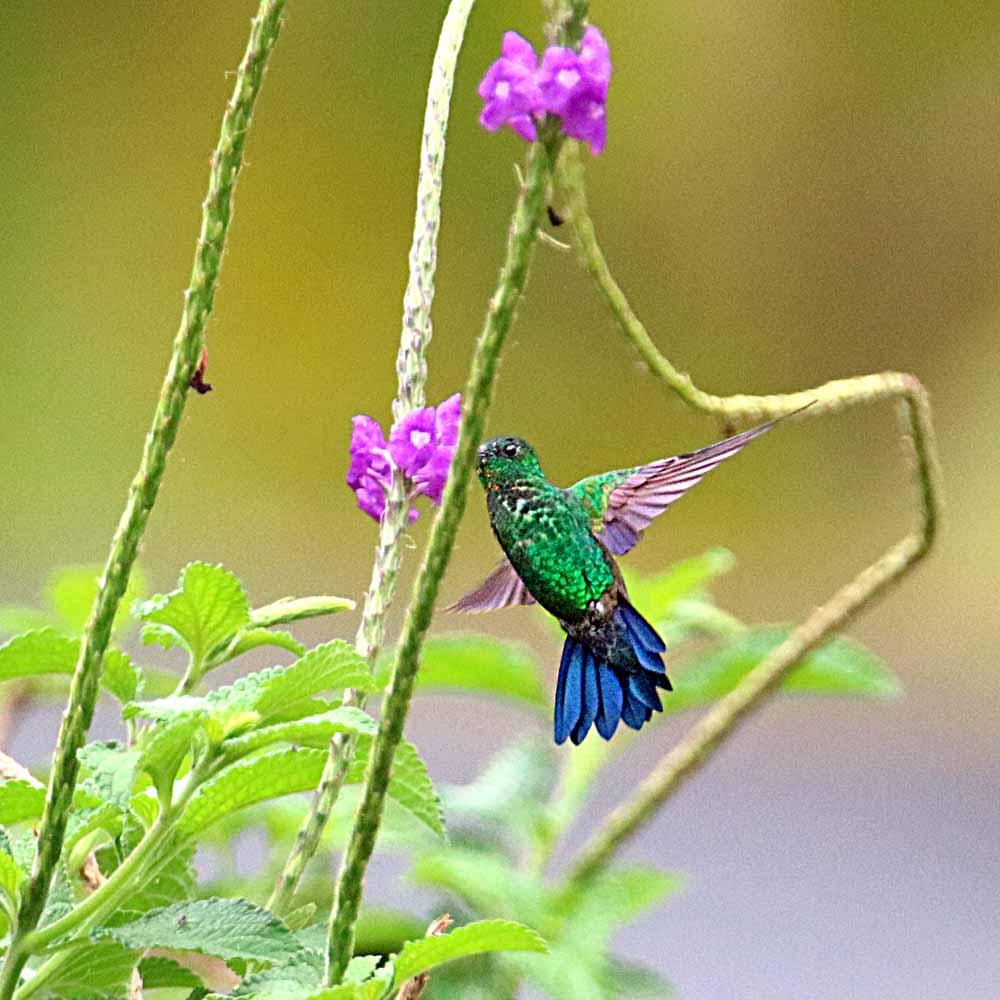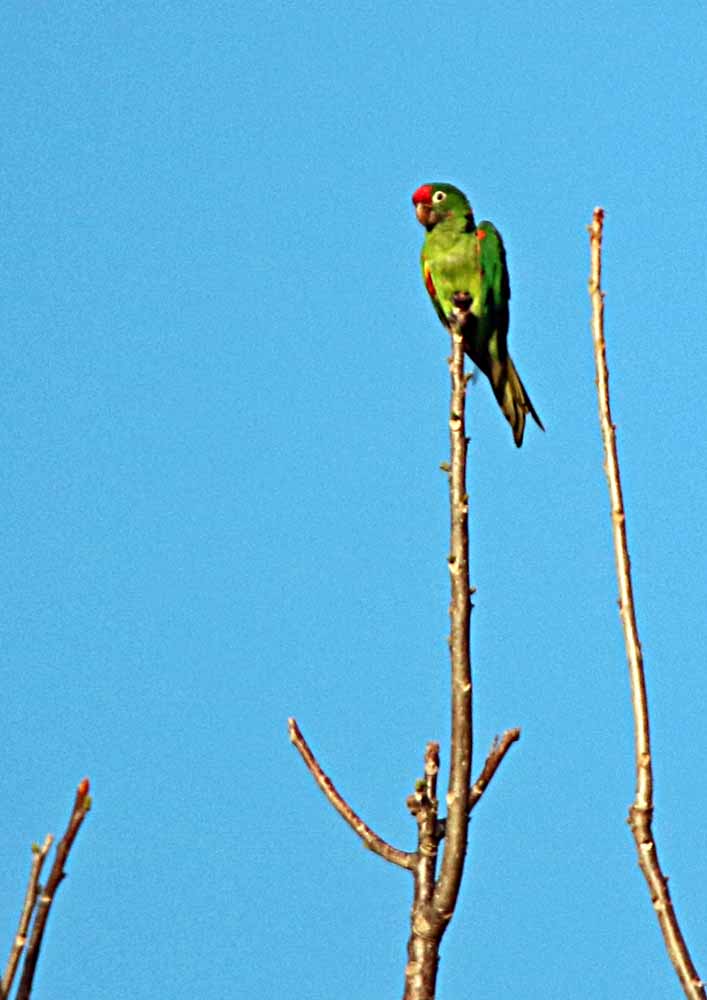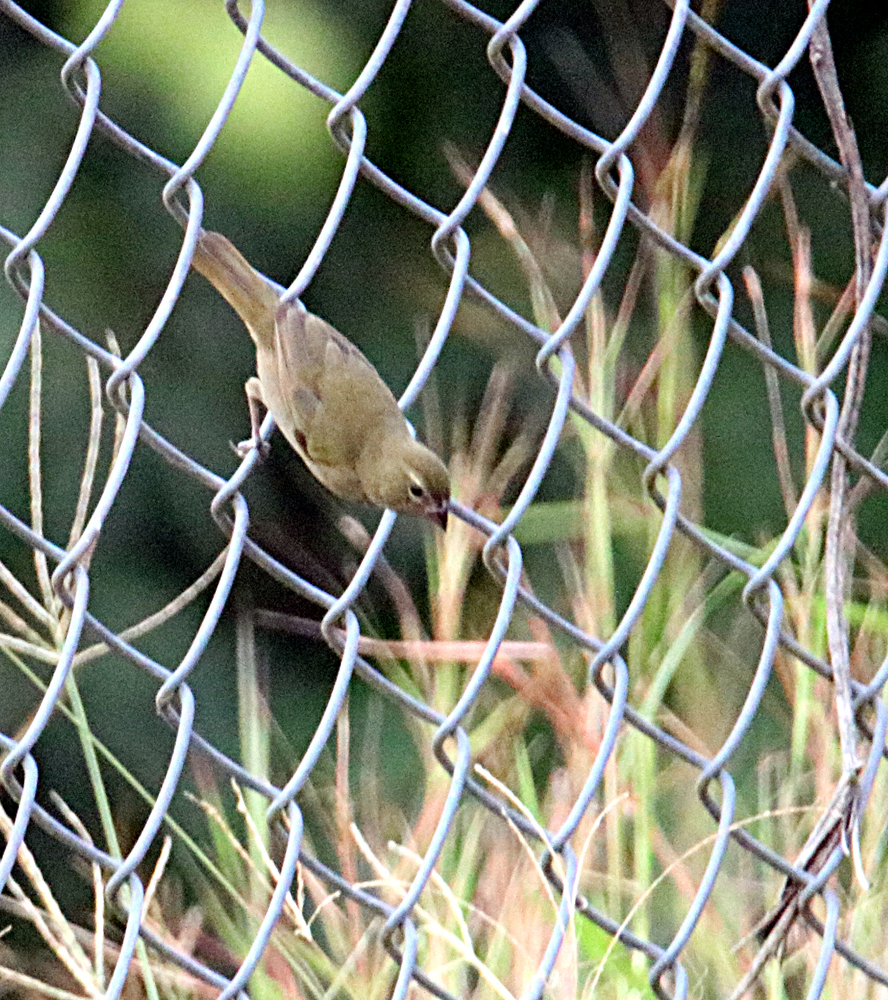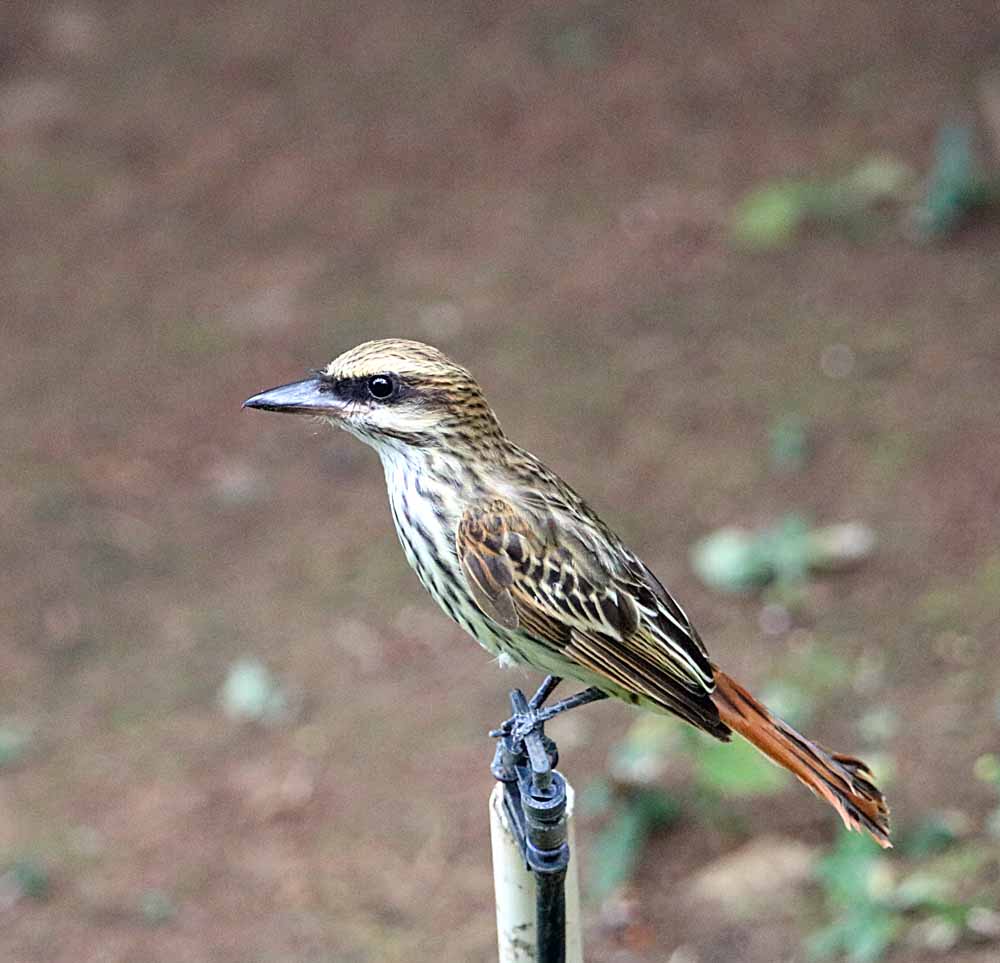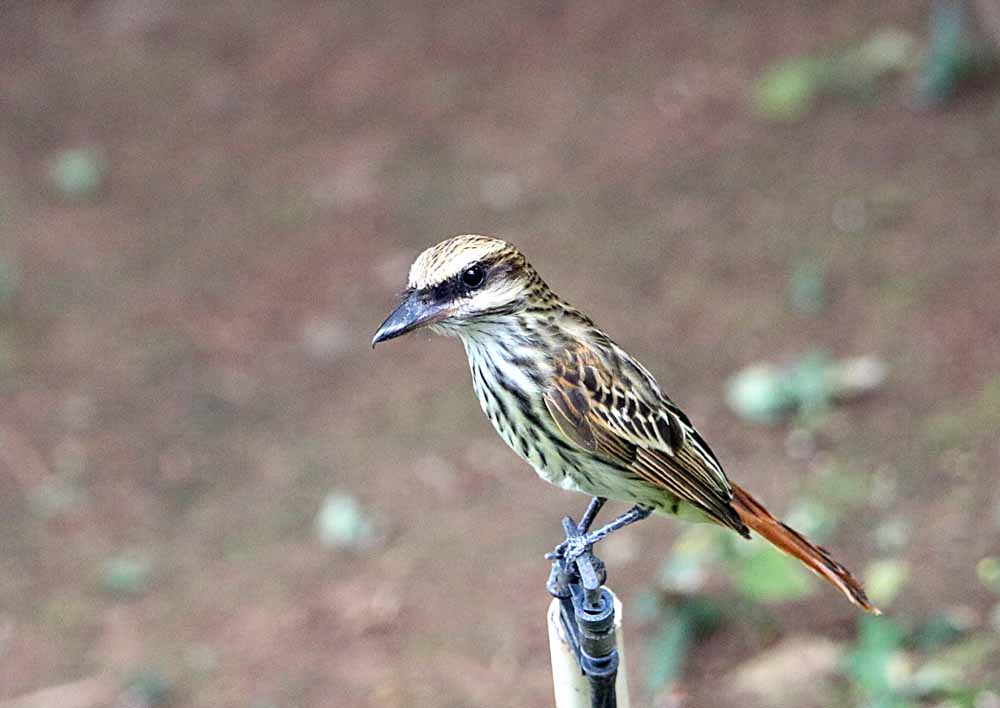Not new to me or Atenas where I live, the Yellow-faced Grassquit, Tiaris olivaceus (linked to eBird) is a type of seedeater (the beak says that) and in this case prefers grasses which you can see the male chewing on in that photo. It is a Latin American bird found throughout Central America, in the Caribbean Islands and the northern edges of South America.
In my GALLERY: Yellow-faced Grassquit you can see that I’ve photographed this bird multiple times in Atenas, where I live, plus once in Monteverde and once near Volcán Tenorio.
These shots of a male and a female I got on my return walk back from Calle Nueva searching for butterflies last week. I got the female first in the cow pasture in front of my house where I also saw the male but had to follow him to a neighbor’s yard to get this shot of him . . .
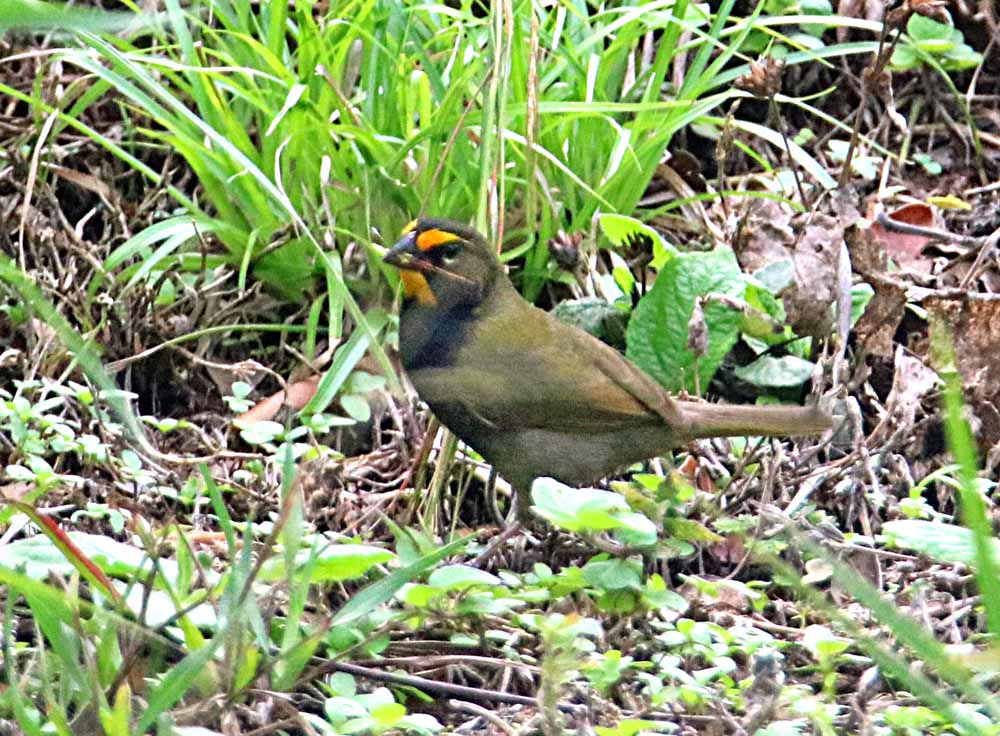
The female shots are my first of a female Yellow-faced Grassquit, unless that one juvenile or immature in my gallery was a female! 🙂 And I am very pleased with this FEMALE shot (a portrait for the gallery!) . . .
Continue reading “Yellow-faced Grassquit”